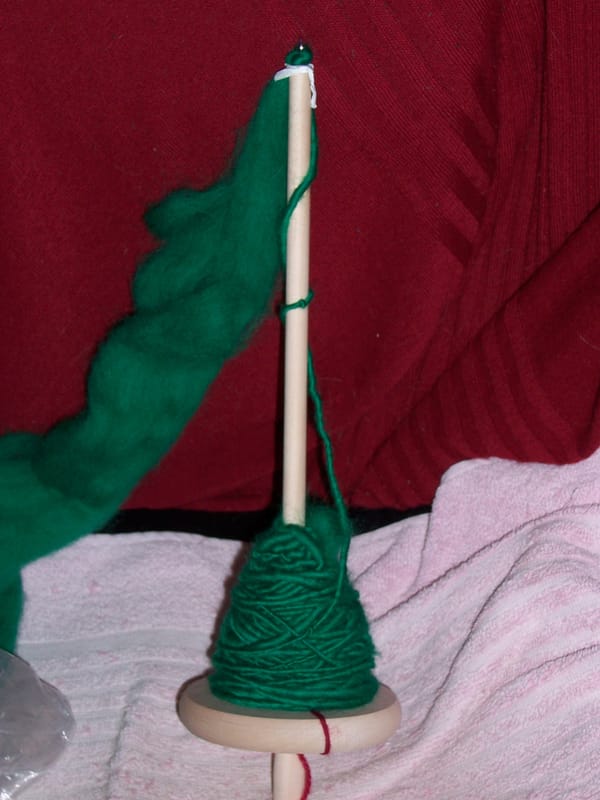Compare and contrast

I rolled up in church yesterday morning wearing one of my Southbanks, as I generally do in the winter; and the pastor's wife, who's learning to sew at the moment, observed that it must have been very hard to sew. It's a good quality mediumweight stretch velour fabric, and if you want to know the colour, then all you need to know is that if I'd just given it black cuffs and a Starfleet logo I could have convincingly cosplayed Captain Kirk with it. And I blinked at her, and said, no, it was actually really easy to sew. Velour doesn't fray at all, so you don't need to finish the seams (the bit I hate!), and it's also very stable. I said, if you're going to talk about difficult to sew, talk about viscose poplin. Lovely fabric, beautiful drape, but it pretty much frays the moment you breathe on it, and it's so liquid that it's a complete pain to line up the grain properly. To which she replied brightly, "Oh, I like poplin!" I had to explain gently that she was thinking of cotton or poly-cotton poplin, and viscose poplin is an entirely different animal. I don't think she's tried sewing with that yet. If she does, she'll get some very nice makes, but she might initially be a bit put out when she finds it doesn't behave anything like its cotton relative.
Similarly, I find a lot of people on Minerva who are frightened of sewing with charmeuse satin or other silky fabrics of that type. When I first started seeing posts like that, I thought "what are they talking about?" I made my first charmeuse satin nightie in my 20s, and I had no problems with it at all. My next thought was "perhaps it's just difficult if someone tells you it is, like programming"; when I was eight years old, my father, who was head of accounts at his company, was instructed to learn to program their new accounting computer, which was an Olivetti Audit-5 and had less memory than my stupidphone. It also took up half a large room. So he brought the manual home because he thought it might be my kind of thing, and I just thought, "ooh, what fun, this is sort of mathematical only not quite, let's see what I can make the computer do." And I would write these little programs in assembler language, which he'd then take to work and run. I expect he got a lot of kudos from telling people his eight-year-old had written these programs, because of course everyone thought programming was really difficult... except that nobody had actually bothered to tell me that, so I just got on with it. (You would have thought that all these clever adults would have realised it wasn't actually difficult as soon as they saw that an eight-year-old could do it; but for some reason it didn't work like that.) So I wondered, very briefly, if the general fear of charmeuse was something like that.
I didn't wonder for very long. The penny dropped pretty fast. Oh, of course. They were all using sewing machines. Right! No, I wouldn't want to sew charmeuse on one of those either.
So I thought it might be interesting to talk about what is actually easy or difficult when you're sewing by hand, because it's not at all the same set of factors.
The most obvious thing is the thickness of the fabric, except that it's not actually just the thickness. Some quite thick fabrics, such as that rather wonderful vegan not-wool coating fabric I used for the Harry Cape, are very easy to sew by hand, although you do have to stab-stitch, which makes it a bit slower. (Normally you just put the needle through from the top of the fabric and then back up from the bottom in one movement, but if the fabric is too thick you won't go through all of the lower layer doing that unless you take really big stitches. It's a similar story if the fabric is very dense, because then you physically can't push through four layers of fabric all at once.) The density of the fabric probably matters rather more than the actual thickness. So some leatherette can be quite a pain to sew by hand; most of it is quite nice, but if I'm thinking of using a heavy leatherette I'll always order a sample just to check. Oddly enough, so can some lace. The lace I used for the concert skirt was so dense in places that it was even rather hard to cut! With lace you can usually avoid those areas and stitch through the holes, but it can take a bit of feeling about with the tip of the needle if the lace is hidden under a layer of opaque fabric. And, obviously, you really don't want to be hand-stitching through sequins, which aren't a problem on a machine. Either remove them altogether along the seam lines, or sew round them and live with the little wiggles. I tend to prefer the former approach most of the time, but for something like a hem I'd be more inclined to work round them.
Slippery fabrics, on the other hand, aren't hard to sew by hand. What is hard is cutting them out accurately. For that nightie it didn't matter so much if I was a little off, since the pieces were all fairly straightforward shapes and I could just trim one piece a little if it didn't quite line up with the one it was supposed to be sewn to, but I'd have had to take more care if I'd been doing anything with more complicated shaping. These days I'd be inclined to pin the selvedges together once I was clear that I'd got the central fold dead straight along the grain, so that the two halves of the fabric couldn't slide. But once your fabric is cut out, sewing it is easy enough, though if it's very slippery it's best to pin it at right angles to the seam to ensure you don't get fabric creep (or, at the very least, you minimise it).
Fabrics that fray a lot are a problem, probably more so than with a machine, because you're handling them more; it's not such an issue if you have decent seam allowances (at least 1.5 cm), but with narrower ones it can be a hassle, especially if you're like me and you tend to stick mock French seams on everything that frays appreciably. A bottle of fray-check is definitely your friend here, but use it sparingly, because it has one of those smells where you don't actually need the warning on the label to know that inhaling too much of it is going to be bad for you. I tend to put it only on the places where the fabric is cut more or less directly along or across the grain; if you're on or close to the bias, it won't fray so much anyway.
Some fabrics won't take pins for one reason or another, usually because it'll mark them; I used to struggle a bit with that until I discovered that this is what quilting clips are for. (Well, other than, obviously, quilting!) Quilting clips do require a bit of ingenuity in use, because you can put a pin anywhere in a piece of fabric (for instance, that Burda poncho I made has a seam to divide it very roughly into body and sleeve areas, so it doesn't twist round while you wear it, and that seam is nowhere near the edge of the fabric), but clips generally have to be right on the edges. They don't have a very wide grip. Thankfully, the Burda poncho is designed for sheer fabrics and I've never yet met one of those that won't take pins, so with a bit of luck I'm never going to have to work out how you clip right in the middle of a large piece. But you can extend in a bit from the edges if you need to by temporarily rolling the fabric over and clipping it like that.
On the other hand, there are some situations where hand sewing is just better, if you have the time and the patience. Ever seen pattern instructions that say "understitch the facing as far as possible"? Do that by hand and you can understitch the whole facing. It might be a bit fiddly in one corner, but it's still perfectly possible. And then there are stretch fabrics. A back-stitched seam stretches as a matter of course, and indeed if you're sewing a stretch fabric and you don't want the seam to stretch, you will need to use some kind of seam tape. So you don't need to zigzag or use special elastic thread (which is expensive). I will admit to a certain bias here, but I'd also add buttonholes to the list. I don't love doing buttonholes, but, nonetheless, my buttonholes are good. They're way better than anything I've ever seen done on a machine, because for a hand buttonhole you don't sew the whole thing and then cut; you sew a line of stitching round where the hole is going to be to hold the fabric in place (running stitch is normally quite enough, but if the fabric is very delicate or inclined to fray I use backstitch), then you cut your hole, then you make your buttonhole. So there are no little fuzzy bits anywhere, and you have a really neat strong edge.
And what about the feature photo? Ah, well, that I haven't tried yet. That's my Tencel lyocell, which arrived the other day and really does look absolutely glorious. From a quick feel and heft, I think it should be pretty easy to sew; it's soft and quite densely woven, so I don't think it should fray too badly. However, it will have to take its place in the queue behind the dressing gown and various other projects, since it's more of a summery outfit.
I will admit, I wouldn't make jeans. It's not hard to hand-sew a couple of layers of heavy denim together, but once you start adding more (which you inevitably do for jeans) it gets very awkward very fast. But that's fine. I was never a jeans person even before I had to re-jig all my bottom halves to accommodate Sibyl; I did once own a pair, but they were black and I bought them in desperation because they were the only trousers I could find at the time to fit me.
But, other than that... there's really not much I couldn't make.




